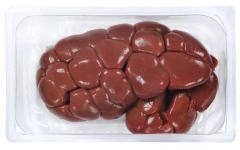Some fought with numbers, and some with skill. The monstrous truth about the losses of the USSR in World War II Sokolov Boris Vadimovich
French losses
French losses
The losses of the French army in 1939–1940, during the Battle of France, amounted to 123 thousand killed and died from wounds and up to 250 thousand wounded. About 20 thousand members of the Resistance movement died, and about 40 thousand of the 1,405 thousand French prisoners of war died in German captivity. To these losses must be added the victims of the Franco-Thai war in Indochina. French losses in this war amounted to 321 killed or wounded, 178 missing, 222 prisoners. If we assume that at least half of the missing are killed and that the ratio between the number of killed and wounded, as on the Thai side, was close to 1:3, then the total number of French dead can be estimated at 140 people. In addition, during clashes with the Japanese in 1940 and 1945, up to 3 thousand people, mostly military, died. The total losses of the French army in Indochina can be estimated at 3 thousand dead. The troops of the Vichy government in clashes with American troops in North Africa in November 1942, as well as in other clashes with Anglo-American troops and with the Free French troops of General Charles de Gaulle, lost 2,653 people killed, including 1,368 people during the landing of American troops in North Africa in November 1942. The losses of American troops amounted to 453 people. The losses of Free French troops during the fighting in Africa amounted to about 1950 people, during the campaign in Italy in 1943–1945 - 8.7 thousand dead and during the fighting on the Western Front - 12.6 thousand people.
French soldiers also died as part of the German army. These were both natives of Alsace and Lorraine, annexed to the Reich, mobilized into the Wehrmacht, and French volunteers who served in the French Legion in Eastern Front, at the end of the war deployed to the 33rd SS Division "Charlemagne". R. Overmans estimates the number of victims among conscripts from Alsace-Lorraine in the Wehrmacht at 30 thousand people. Since we believe his estimate of German military losses to be overestimated by 1.3 times, the most probable number of dead natives of Alsace and Lorraine seems to us to be 23 thousand people. In addition, 6,425 French volunteers served in the Wehrmacht and then in the SS troops. About 2,640 more people joined the Charlemagne division from the German Navy, the Todt organization and the National Socialist Automobile Corps, so that the total number of French volunteers was about 9 thousand people. The death toll among them is estimated between July 1941 and May 1943 at 169 killed and 550 wounded. By September 1, 1944, the total number of those killed had risen to 400. In September, all French volunteers were gathered into the Charlemagne division. At the end of February and March 1945, the division took part in heavy fighting in Pomerania, where about 4.8 thousand legionnaires were killed or captured. Approximately another 300 French SS men died or were captured in Berlin in April–May. Taking the death toll in Pomerania as one third of the total number of killed and captured, and the death toll in Berlin as half, the total number of French killed in the last battles of 1945 can be estimated at 1,750 people, and the total number of French SS men killed and dying from wounds – 2150 people. The remnants of the Charlemagne division, which found themselves outside of Berlin, surrendered to the Western allies. According to official Russian data, 23,136 French were in Soviet captivity, of whom 1,325 died in captivity. Of this number, no less than 1010 people were considered Alsatians. Of these, by the beginning of 1949, 5 people died, and the rest were repatriated. At the same time, 22,115 French people were counted in Soviet captivity. Of these, 20,762 people had already been repatriated by the beginning of 1949, 1 was sent to form national French units, 1 was placed in prison, 1 left for other reasons, 21 people still remained in prisoner of war camps, and 1,329 prisoners died. Together with the Alsatians, this makes 1,334 French citizens who died in Soviet captivity - 9 more than according to official data in 1956.
French civilian casualties include victims of German reprisals, as well as victims of repression by the French authorities in 1944–1945. The total number of civilian casualties in the fighting in France is estimated at 125 thousand people. This includes both victims of ground battles and German bombings of 1940 - 58 thousand people, and victims of Anglo-American bombings - 67 thousand people. In addition, up to 230 thousand French citizens became victims of Nazi repression. Of this number, the number of victims of the Roma genocide in France is estimated at 15 thousand people, and the victims of the Holocaust in France - at 73.5 thousand Jews (out of 76 thousand deported Jews in France, no more than 2.5 thousand survived). There are more high figure dead Jews of France - 83 thousand people. Perhaps this includes not only French Jews, but also emigrants from Germany and other countries.
The number of people executed for collaboration or killed without trial on suspicion of collaboration is estimated at 10 thousand people. Of these, only 3,784 people were executed by court verdicts.
We estimate the total number of French citizens killed during World War II at 602.3 thousand people, of which about 237.3 thousand people were killed by military personnel, including Resistance fighters. Of the total French military, approximately 28.1 thousand died fighting on the side of the Axis powers. According to V.V. Erlichman, about 6.5 thousand residents of French African colonies, primarily Moroccans and Senegalese, died as part of the French troops in World War II. Taking this into account, the casualties of the population of France proper can be estimated at 595.8 thousand people. French colonial casualties were probably divided roughly equally between the countries of French North Africa and the countries of French West Africa.
From the book Absinthe by Baker PhilChapter 4. Meanwhile in France... Gaston Beauvais - the doomed absinthe drinker from Maria Corelli's novel Wormwood - is a man with literary aspirations: he even wrote a short essay about Alfred de Musset. He was one of the first major French poets to become a victim
From the book History of the Gestapo by Delarue Jacques From the book Weapons and Rules of Duels author Hamilton JosephTHE KING OF FRANCE AND THE DUKE OF BOURBON The current king of France (i.e. Charles X (1757 - 1836), king in 1824 - 1830 - Ed.) when he was Count d'Artois fought with the Duke of Bourbon. The Count de Nivet was the latter's second, and the Count d'Artois was the Marquis de Crussal. The quarrel occurred on
From book Short story Freemasonry author Gould Robert FrickBUILDERS GUILDS IN FRANCE In this and the following sections we will present to the reader short review formation and collapse of construction guilds in France. By combining disparate fragments into a coherent narrative, we will give short description most notable
From the book War at Sea. 1939-1945 by Ruge FriedrichBROTHERHOODS OF FRANCE The concept of "Brotherhood" is the most comprehensive, it includes three types of Brotherhoods formed by French hired workers (or Journeymen who have served their time) in order to receive assistance during the so-called "journey through
From the book Lenin in France, Belgium and Denmark author Moskovsky Pavel VladimirovichLanding in Southern France Further progress was facilitated by the landing on August 15, 1944 in Southern France, between Toulon and Nice. although as an operational complement to the Normandy invasion, this landing was much overdue. The reason for this delay
From the book Who fought with numbers, and who fought with skill. The monstrous truth about the losses of the USSR in World War II author Sokolov Boris VadimovichADDRESSES OF V.I. LENIN IN FRANCE * * Compiled based on books: Vladimir Ilyich Lenin. Biographical chronicle, volumes 1. A 6 and Complete Works of V. I. Lenin. In May 1895, Lenin went abroad for the first time. In June he lives in Paris. On June 27, 1902, V.I. Lenin arrives from
From the book War. 1941-1945 author Erenburg Ilya GrigorievichCivilian losses and general losses of the German population in World War II It is very difficult to determine the losses of the German civilian population. For example, the death toll from the Allied bombing of Dresden in February 1945
From Book Two World War author Churchill Winston SpencerThis year, France celebrated a tragic anniversary - the 75th anniversary of the shameful surrender to Nazi Germany.
As a result of the offensive that began on May 10, 1940, the Germans defeated the French army in just a month. On June 14, German troops entered Paris without a fight, which had been declared an open city by the French government to avoid its destruction. On June 22, 1940, France capitulated on humiliating terms: 60% of its territory was occupied, part of the land was annexed by Germany and Italy, the rest of the territory was controlled by a puppet government. The French had to maintain the occupying German troops, the army and navy were disarmed, the French prisoners were supposed to be in camps (out of one and a half million French prisoners of war, about a million remained in camps until 1945).
I dedicate this photo collection to this tragic event for France.
1. Residents of Paris look at the German army entering the city. 06/14/1940
2. German soldiers on the armor of an abandoned French light tank Hotchkiss H35.
3. Captured wounded French officer from a hospital captured by German troops in Juvisy-sur-Orge.
4. Captured wounded French soldiers from a hospital captured by German troops in Juvisy-sur-Orge.
5. A column of French prisoners of war on a march along a country road.
6. A group of French prisoners of war follows a city street to a meeting place. In the photo: on the left are French sailors, on the right are Senegalese riflemen of the French colonial troops.
7. Captured French soldiers, among them several blacks from French colonial units.
8. German soldiers next to a French Renault R35 light tank abandoned on the road near Lahn.
9. German soldiers and an officer pose with a downed British Spitfire fighter (Supermarine Spitfire Mk.I) on the beach near Dunkirk.
10. Two French Renault R35 light tanks abandoned on the street of a populated area.
11. A column of French prisoners of war passes through the village.
12. Captured French soldiers walk along the line of German soldiers. The picture shows soldiers from various units defending the Maginot Line.
13. Captured soldiers of various units of the French colonial troops.
14. Captured French soldiers at the assembly point in Saint-Florentin.
15. Captured French soldiers guarded by a German sentry.
16. A column of French North African prisoners of war heading to the gathering place.
17. French artillery equipment abandoned on the side of the road near Brunhamel.
18. Helmets and equipment abandoned by French soldiers during the surrender on a city street.
19. A column of French prisoners of war on the road in the Moy-de-Aisne area.
20. A group of captured French soldiers in Amiens.
21. French soldiers with their hands raised surrender to German troops.
22. German mountain rangers near the captured 155-mm French cannon Canon de 155 mm L Mle 1877 de Bange, with a barrel made in 1916 (sometimes called Canon de 155 mm L Mle 1877/1916), captured near the Marne.
23. French prisoners of war on vacation in the Dieppe area. Judging by the characteristic elements of the uniform in the picture, the servicemen are from a cavalry unit.
24. German soldiers on the Place de la Concorde in Paris.
25. A group of captured Moroccan soldiers of French colonial troops in Amiens.
26. Line up of captured Senegalese riflemen of French colonial troops in Amiens.
27. French prisoners of war at the assembly point. Among the prisoners are members of the French North African colonial forces, presumably Senegalese.
28. Wounded French soldiers at the infirmary in the city of Rocroi.
29. French prisoners of war drink water during a halt.
30. Vehicles abandoned by the Allies on the beach near Dunkirk.
31. The commander of the 7th Panzer Division of the Wehrmacht, Major General Erwin Rommel, and his headquarters officers are crossing the river by boat.
32. A column of French prisoners of war is walking along the side of the road, escorted by German soldiers. Presumably the area around Rocroi.
33. A group of French prisoners of war on the march along the road. In the background is a flying German transport plane Ju-52.
34. German artillerymen transport a 37-mm PaK 35/36 anti-tank gun by boat across the Meuse.
35. A German military band marches along the streets of occupied Paris.
36. French prisoners of war follow the road to the gathering place. In the center of the photo are three prisoners of war from the Zouave regiment.
37. French prisoner of war in the field.
38. French Navy Loire-Nieuport LN-411 dive bomber made an emergency landing.
39. A German soldier near the crashed French fighter Bloch MB.152.
40. A group of French prisoners of war in formation.
41. German soldiers pose next to a broken French 25 mm Hotchkiss anti-tank gun (Canon de 25 mm antichar Modele 1934 Hotchkiss).
42. Black prisoners of French colonial units in formation.
43. Two German soldiers change position during a battle in a destroyed French town.
44. A German soldier examines a captured saber captured in France.
45. Captured French pilots talk with German soldiers near the tent.
46. German soldiers next to a captured French 25-mm anti-tank gun of the 1934 model of the Hotchkiss system (Canon de 25-mm antichar Modele 1934 Hotchkiss).
47. A captured French infantryman (possibly an officer) shows something on the map to German officers. To the right and left in helmets are captured French tank crews.
48. Column of French prisoners at the Palace of Versailles in Paris.
49. Abandoned French light tanks AMR-35.
50. An unknown prisoner of war soldier of one of the French North African (Moroccan) Spagi regiments on the march as part of a column of prisoners.
51. A column of French prisoners of war in Rocroi is moving towards the gathering place. There is a sign on the road showing the direction to Fume.
52. Line up of prisoners of war from the French North African spagi regiments in the joint camp in Etampes during assignment to work.
53. An unknown prisoner of war soldier from the French 9th Algerian Regiment of the 2nd Spagi Brigade. The remnants of the regiment surrendered on June 18, 1940 near the city of Besançon.
54. A column of French prisoners passes by a German convoy in the Avranches area.
55. German soldiers and French prisoners from colonial units in the camp at the Proto barracks in Cherbourg.
56. A German soldier distributes cigarettes to prisoners of French colonial units.
57. Column of the 6th German Panzer Division in a field in France. In the foreground is a Czech-made light tank LT vz.35 (German designation Pz.Kpfw. 35(t)), in the background are German Pz.Kpfw tanks. IV early modifications.
58. Black French prisoners of colonial units wash clothes in the Frontstalag 155 camp in the village of Lonvic, 5 km from the city of Dijon.
59. Black French prisoners in the Frontstalag 155 camp in the village of Lonvic, 5 km from the city of Dijon.
60. Two German soldiers walk along the street of the French village of Saint-Simon past dead cows.
61. Five French prisoners (four are black) stand by the railway.
62. Killed French soldier on the edge of a field in Normandy.
63. A group of French prisoners of war is walking along the road.
64. Representatives of France are sent to the “carriage of Marshal Foch” to negotiate an armistice with representatives of Germany. In this very place, in this very carriage, on November 11, 1918, the Compiegne Truce, humiliating for Germany, was signed, which recorded the shameful defeat of Germany in the First World War. The signing of the new Compiegne Truce in the same place, according to Hitler, was supposed to symbolize the historical revenge of Germany. In order to roll the carriage out into the clearing, the Germans destroyed the wall of the museum where it was kept and laid rails to the historical site.
65. A group of Wehrmacht soldiers take cover from fire in the French town of Sedan.
66. German soldiers smoke next to horses. From the photo album of a private driver infantry division Wehrmacht
67. German soldiers settled down to rest next to their bicycles. From the photo album of a private driver of a Wehrmacht infantry division.
68. Artillery pieces captured by German troops during the French campaign. In the foreground are French 155-mm cannons of the 1917 model from Schneider. These guns in the Wehrmacht received the designation 15.5 cm gun K.416(f). In the background are French heavy 220-mm Schneider model 1917 cannons, barrels and carriages, which were transported separately. These guns were designated by the Wehrmacht as the 22 cm gun K.232(f).
69. A German soldier demonstrates trophies - captured weapons and ammunition of French troops. Photo from the photo album of a private driver of a Wehrmacht infantry division.
70. A team of donkeys as part of a German convoy. From the photo album of a private driver of a Wehrmacht infantry division.
71. German sappers are restoring a destroyed bridge. Photo from the personal album of a Wehrmacht engineer battalion soldier.
72. Two German officers and a non-commissioned officer look at the map.
73. German soldiers at the entrance to the military cemetery in honor of those killed in the First World War near Verdun in the French town of Duamon.
74. Wehrmacht soldiers “wash” awards received for the campaign in France. Photo from the personal album of a Wehrmacht Oberfeldwebel.
75. A French officer talks to a German officer during the surrender of the Nantes garrison.
76. German nurses at the monument to Marshal of France Ferdinand Foch in the Compiegne Forest. Very close to this place, the surrender of France in the war with Germany was signed (and in 1918, the surrender of Germany in the First World War).
77. A French bomber Amiot 143 captured by German troops on a field in the commune of Sombernon in Burgundy. The aircraft is from the 2nd Air Group of the 38th Bombardment Squadron. The 38th Bombardment Squadron was stationed near the city of Auxerre in Burgundy. The plane returning from a mission made an emergency landing on a field due to unfavorable weather conditions and was captured by German troops. Next to the plane are motorcycles of one of the units of the German troops.
78. Two French prisoners stand against the wall of the house.
79. Column of French prisoners on a village street.
80. Five non-commissioned officers of the 173rd artillery regiment Wehrmacht on vacation during the French campaign.
81. The French battleship Bretagne (commissioned in 1915) was sunk at Mers-El-Kebir during Operation Catapult by the British fleet. Operation Catapult was intended to capture and destroy French ships in English and colonial ports to prevent the ships from falling under German control after the surrender of France. The battleship "Brittany" was hit by the third salvo, hitting the base of the tripod mast, after which a strong fire began. The commander tried to run the ship aground, but the battleship was hit by another salvo from the English battleship Hood. Two minutes later, the old battleship began to capsize and suddenly exploded, taking the lives of 977 crew members. The photo was probably taken from the French seaplane Commandant Test, which miraculously avoided being hit during the entire battle, and subsequently took on board the surviving crew members of the dead battleship.
82. A column of French captured colonial units on the march on the railway bridge.
83. A soldier of the 73rd Wehrmacht Infantry Division poses with a French prisoner.
84. Soldiers of the 73rd Wehrmacht Infantry Regiment interrogate a French prisoner of war.
85. Soldiers of the 73rd Wehrmacht Infantry Regiment interrogate a French prisoner of war.
86. The body of a British artilleryman near a 40 mm 2 pounder QF 2 pounder anti-tank gun.
87. French prisoners are standing near a tree.
88. Soldiers of the Royal Highlanders "Black Watch" buy dishes from a French woman. 10/16/1939
89. A column of French prisoners passes by a German convoy in the Avranches area.
90. German soldiers with horses on Stanislaus Square in the French city of Nancy at the monument to the Polish king Stanislaw Leszczynski.
91. German cars on Place Stanislas in the French city of Nancy. In the center of the square is a monument to the Polish king Stanislaw Leszczynski.
93. German 150-mm self-propelled howitzer "Bison" (15 cm sIG 33 Sfl. auf Pz.KpfW.I Ausf B ohne Aufbau; Sturmpanzer I) against the background of the explosion of its shell on the second floor of a corner building during fighting in France.
94. British soldiers captured by the Germans in Dunkirk, in the city square.
95. Oil storage tank fire in Dunkirk. The plane on the right is a Lockheed Hudson, owned by the British Royal Air Force.
96. A German soldier killed in battle during the French campaign of the Wehrmacht. On the parapet of the trench there is a German cap and parts of a belt.
97. Column of captured French soldiers. Among them are many Africans from French colonial units.
98. A French woman greets Canadian soldiers who landed in France 4 days before the surrender of French troops.
99. French soldiers take pictures on the street of the town during the “Phantom War”. 12/18/1939
100. German women, children and soldiers of the cordon in the Nazi salute at a mass event in Germany dedicated to the victory of German troops in France.
101. The sinking of the British troop transport RMS Lancastria on June 17, 1940. In the water and on the sides of the tilted ship, many people are visible trying to escape. On June 17, 1940, the English troop transport Lancastria (before the war, a passenger liner that cruised the Mediterranean Sea) with a displacement of 16,243 tons was sunk by German Ju-88 bombers off the coast of France. Transport evacuated British military units from France to Great Britain. There was also on board big number civilians, including women and children. The ship was sunk in a twenty-minute attack shortly after leaving the French port of Saint-Nazaire. As a result, about four thousand passengers died - drowned, died from bomb explosions, shelling, and suffocated in oil-contaminated water. 2,477 people were saved.
102. Bombing by British aircraft of a French airfield in the city of Abbeville, captured by the Germans. The picture shows falling British 500-pound (227 kg) aerial bombs.
103. The crew of the French tank Char B1 No. 350 “Fleurie” in front of their vehicle.
104. German dive bombers Junkers Ju 87 B-2 from the Immelmann squadron (StG2 Immelmann) in the skies of France.
105. Killed black French soldier.
106. During Operation Dynamo (the evacuation of Anglo-French troops from Dunkirk to England), the destroyer Bourrasque hit a mine on May 29, 1940 in the area of Ostend (Belgium) and sank the next day.
107. Soldiers of the SS division “Totenkopf” in battle in France.
108. Motorcyclist of the SS division “Totenkopf” in France.
109. Soldiers of the SS division “Totenkopf” regulate traffic on the street French city, accelerating the advance of lagging troops.
110. Burning and sunken French warships photographed by an RAF aircraft the day after they were scuttled by their crews at the quay walls at Toulon.
France in World War II was directly involved from the very first days of September 1939. As a result of the fighting, the northern half of France and the Atlantic coast were occupied.
Encyclopedic YouTube
1 / 5
✪ France during the occupation in World War 2.
✪ France in the second half of the 20th century – beginning of XXI century. Video lesson on General History 9th grade
✪ Nazi occupation of Paris (Paris)
✪ Collaborators of the Second World War. Episode 1 Vichy regime, patriots and traitors
✪ Apocalypse: World War II - 2 Crushing Defeat (1939–1940)
Subtitles
The French in the war against Hitler's coalition
Entering the war
France declared war on Germany on September 3, 1939, but did not conduct active hostilities (the so-called Strange War). The only attempt to influence the course of the war was the Saar Offensive Operation.
By 10 May 1940, 93 French divisions were stationed in northeastern France [ ], 10 British divisions and 1 Polish division.
By May 10, 1940, French troops consisted of 86 divisions and numbered more than 2 million people and 3,609 tanks, about 1,700 guns and 1,400 aircraft.
Germany maintained 89 divisions on the border with the Netherlands, Belgium and France [ ] .
French campaign 1940
On June 17, the French government turned to Germany with a request for an armistice. On June 22, 1940, France capitulated to Germany, and the Second Compiegne Truce was concluded in the Compiegne Forest. The result of the armistice was the division of France into an occupation zone of German troops and a puppet state controlled by the Vichy regime.
Hostilities officially ended on June 25. The French army lost 84,000 people killed and more than a million captured as a result of the war. German forces suffered 45,074 killed, 110,043 wounded and 18,384 missing.
Occupation of France
German occupation of France
During the occupation of France, the only magazine that did not stop publishing was Historia. All other magazines were closed.
Italian occupation of France
Resistance
On the other hand, immediately after German occupation A “resistance movement” developed in France. Some of the French helped the Soviet Union and its allies. At the end of 1942, the Normandy squadron (later the Normandy-Niemen air regiment) was formed on the territory of the USSR, consisting of French pilots and Soviet aircraft mechanics. French citizens served in the Royal Air Force, as well as in other units of the countries of the anti-Hitler coalition.
The French in the war against the Anti-Hitler Coalition
Vichy regime in Southern France
The Vichy regime was created in the unoccupied zone of France and its colonies in July 1940. Even during the period of its creation, the French government broke off diplomatic relations with Great Britain as a result of the British attack on the French fleet. The USSR and the USA initially established diplomatic relations with the Vichy regime and transferred ambassadors to London only in 1941, after the German attack on Soviet Union. Formally, the Vichy regime pursued a policy of neutrality, but in fact collaborated with Nazi Germany and Japan.
War at sea
After the surrender of France, the British government was concerned about the fate of the French fleet. Transferring it into the hands of the Germans changed the balance of power, and maintaining its advantage at sea was vital for Great Britain. Therefore, on July 2, 1940, the decision was made to launch an operation to capture or destroy the French navy.
All French warships stationed in the British ports of Plymouth and Portsmouth were captured. In Alexandria, a compromise was reached; the French ships were disarmed and deprived of fuel, but were not captured. At the French base of Mers-el-Kebir, the French refusal to comply with a British ultimatum led to a naval battle. The obsolete French battleship Brittany was sunk and several other French ships were seriously damaged. French losses exceeded 1,200 people. The British lost only a few aircraft. After several more smaller-scale clashes, the parties ceased hostilities on July 12.
The British's main goal was not achieved. The main forces of the French fleet, including three modern battleships, were concentrated in the port of Toulon. This fleet was scuttled by the French themselves only in November 1942, when there was a threat of its capture by the Germans.
On the other hand, the British attack, “treacherous” from the French point of view, strengthened anti-British sentiments and led to the consolidation of the Vichy regime, which was being formed at the same time, in France itself and its colonies. General De Gaulle's position was greatly weakened.
War in Africa and the Middle East
In September 1940, the British and Fighting France attempted to land in Dakar with the aim of capturing the French colony of Senegal. However, contrary to De Gaulle’s assumptions, the French fleet and army turned out to be loyal to the Vichy regime and gave it hard repulse attackers. After a two-day battle, the significantly superior Anglo-Australian fleet was unable to achieve virtually anything, the landing on the shore was unsuccessful and the Senegalese operation ended in complete failure. This dealt another blow to De Gaulle's reputation.
In November 1940, De Gaulle, with British support, launched a successful attack on the French equatorial African colony of Gabon. As a result of the Gabonese operation, Libreville was captured and all of equatorial French Africa was captured. However, due to the economic underdevelopment and strategic insignificance of the region, this success did not compensate for the failure in Senegal. Most French prisoners of war refused to join Fighting France and chose to be captured until the end of the war in Brazzaville.
On June 8, 1941, British, Australian troops and Fighting France launched a ground operation to capture Syria and Lebanon, controlled by the Vichy government. At the first stage, the Vichyists put up stubborn resistance, carried out several successful counterattacks and inflicted significant aviation losses on the enemy. However, within a month the allies managed to break the enemy’s resistance and on July 14 an agreement on surrender was signed in Acre. Under its terms, the Anti-Hitler Coalition gained control over Syria and Lebanon, and all soldiers and officers of the Vichy regime were offered the choice of repatriating to France or joining the Free French troops. As in Gabon, the vast majority of Vichyists refused to join General De Gaulle. The French also retained their fleet and air force and managed to scuttle the captured British ships.
On May 5, 1942, Great Britain launched an operation to occupy Madagascar in order to prevent the creation of a Japanese naval base on the island. A small French force (8,000 people) resisted for more than six months and surrendered only on November 8.
On November 8, 1942, the Americans and British landed in Morocco and Algeria. For political reasons, the operation was carried out under the US flag. The troops of the Vichy regime were demoralized by this point and did not offer organized resistance. The Americans won a quick victory with minimal losses within a few days. French forces in North Africa defected to the Allies.
War on the Eastern Front
On the Eastern Front, at least two units were formed from French volunteers, which fought as part of the Wehrmacht, but under the French flag and with French command staff.
On February 10, 1945, the 33rd Grenadier Division of the SS troops “Charlemagne” (1st French) was formed - from the previously existing French SS brigade of the same name that fought against the USSR. The French SS division fought on the Eastern Front. In March 1945, it was defeated by the Red Army in Pomerania and its remnants were withdrawn to the rear. The battalion of this division (300 people) in the Berlin operation, together with the Nordland division, defended the Reichstag area. According to some French sources, the heroically defending French destroyed 60 “Russian” tanks, were the last defenders of Hitler’s bunker and prevented the “Soviets” from taking it by the May 1st holiday.
The number of French prisoners of war in captivity of the USSR in 1945 reached 23,136 people, which is three times the number of the Charlemagne division.
Liberation
Landing in Normandy
After the Normandy landings, American, British, Canadian and Polish troops captured Paris (August 25, 1944). This gave a serious impetus to the development of the Resistance Movement; Charles de Gaulle, who lived in London, began to be considered a national hero.
French-German War 1939-1940
France declared war on Germany on September 3, 1939, but did not conduct significant military operations. By May 10, 1940, 93 French divisions, 10 British divisions and 1 Polish division were stationed in northeastern France. Germany maintained 89 divisions on the border with the Netherlands, Belgium and France.
On May 10, 1940, German troops crossed the border of the Netherlands and Belgium. On the same day, French troops entered Belgium. There were no military operations directly on the German-French border (Maginot Line). The first clash between German and French troops took place on May 13 in Belgium. On the same day, German troops crossed the Belgian-French border.
On May 25, the commander-in-chief of the French armed forces, General Weygand, said at a meeting of the French government that it was necessary to ask the Germans to accept their surrender.
At the same time, French communist party conducted active propaganda in the army, calling on French soldiers to surrender to German captivity. This campaign was a success.
On June 8, German troops reached the Seine River. On June 10, the French government moved from Paris to the Orleans area. Paris was officially declared an open city. On the morning of June 14, German troops entered Paris.
On June 17, the French government turned to Germany with a request for an armistice. On June 24, 1940, France surrendered to Germany.
Soviet leader Joseph Stalin congratulated German Fuhrer Adolf Hitler, calling this event
"a just victory over French imperialism".After the capitulation, the French government was allowed to administer about a third of the territory of unoccupied German mainland France (the southeastern part), have an army of 100,000 there (similar to what Germany was allowed after the First World War), and also administer colonies in Africa, Asia and South America, having troops there.
French troops in the war against the USSR in 19 41-1945
French Volunteer Legion for the War against the Bolsheviks ( full official name) was created by the French authorities in July 1941.
In October 1941, this French legion (actually an infantry regiment of 2.5 thousand people) was sent to the German-Soviet front, in the Moscow direction. The French suffered heavy losses there, and from the spring of 1942 to the summer of 1944, the legion was removed from the front and sent to fight against Soviet partisans in the rear.
In the summer of 1944, the French legion actually found itself on the front line again (as a result of the Red Army's offensive in Belarus), again suffered heavy losses and was withdrawn to Germany.
In September 1944, the French volunteer legion was disbanded, and a French brigade of SS troops (numbering more than 7 thousand people) was created in its place.
In February 1945, the French SS brigade was renamed the 33rd SS Grenadier Division "Charlemagne" ("Charlemagne") and sent to the front in Pomerania against Soviet troops. In March 1945, the French SS division was almost destroyed.
The remnants of the French division (about 700 people) fought in Berlin against Soviet troops at the end of April 1945.
About 8 thousand French(not counting the Alsatians drafted into the Wehrmacht).
3 Frenchmen were awarded the German Knight's Cross.
French troops in the war against Britain and the USA
In 1941, French troops fought against British troops in Lebanon and Syria, Madagascar, Senegal and the Congo. In all these theaters of war, French troops were defeated by the British.
In 1942, French troops fought in Morocco and Algeria against American and British troops landing there, but were defeated and captured within a few days.
Ending Second World War
During the signing of the act of surrender of Germany on May 8, 1945, the head of the German delegation, Field Marshal Keitel, seeing people in French military uniform among those present at the ceremony, could not contain his surprise:
"How?! And these also defeated us, or what?!”However, France was allocated a zone of occupation of Germany and was given a seat as a permanent representative on the UN Security Council.
History of Romania ... Wikipedia
See also: Collaborationism... Wikipedia
Great Britain participated in the Second World War from its very beginning on September 1, 1939 (September 3, 1939, Great Britain declared war) until its end (September 2, 1945). Contents 1 Political situation on the eve of the war ... Wikipedia
American infantry during the landing. Operation Overlord The United States of America participated in World War II since December 1941 in the Pacific Theater of Operations. S n ... Wikipedia
Poster “Poland First in the War” This article examines aspects of the participation of the state of Poland in World War II, starting from the attack of German forces on this country on September 1, 1939, and ending with the actions to capture Berlin in ... ... Wikipedia
During the Second World War, Türkiye occupied a position of neutrality and joined the Anti-Hitler coalition only at the last stage of the war. However, given the important strategic position of Turkey, the warring parties undertook... ... Wikipedia
See also: Participants in World War II and the Catastrophe of European Jewry Jews participated in World War II primarily as citizens of the warring states. In the historiography of the Second World War, this topic is widely discussed in... ... Wikipedia
Fighter bomber P 47 of the Brazilian air squad in Italy. Brazil participated in World War II on the side of the Anti-Hitler Coalition... Wikipedia
Mediterranean theater of operations of World War II Mediterranean Sea North Africa Malta Greece (1940) Yugoslavia Greece (1941) ... Wikipedia
Contents 1 Preceding events and capture by Germany 2 Occupation 2.1 ... Wikipedia
Books
- At the tip of a tank wedge. Memoirs of a Wehrmacht officer 1939–1945, Hans von Luck. The young commander of the reconnaissance squadron, Hans von Luck, was one of the first to take part in the fighting of World War II and ended it in 1945 at the head of the remnants of the 21st Panzer Division in a few...









